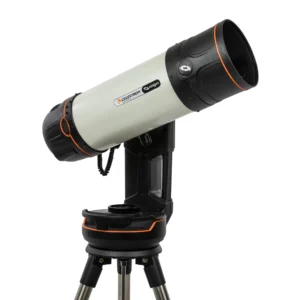
If you think constellations are just a pretty formation of stars, then you are partially right. Nowadays, we do not use them in our daily lives. But for our ancestors, constellations were almost everything.
We humans depended on constellations for agriculture, navigation, and, in some cultures, even for religious beliefs.
What are constellations?
Constellation is a group of stars that are close to each other from our point of view on Earth. At the moment, there are 88 constellations that are accepted by the International Astronomical Union.
All these constellations are named after different shapes, animals, and even gods in some cultures.
As mentioned earlier, constellations played a huge role in the daily lives of our ancestors. They were dependent on constellations for navigation, agriculture, etc.

What were constellations used for in ancient times?
Use in navigation
In ancient times, navigation was a vital skill for travelers, merchants, and mariners. Nowadays, we use modern navigational tools such as compasses, GPS, and detailed maps. But in ancient times, people relied on their observations of the sky and celestial bodies to find their way. Constellations played a crucial role in this process, serving as reliable markers for direction and location.
The very first use of constellations in navigation was to decide the cardinal directions (North, South, East, and West). To find the North, they used to locate Polaris. The north star was very important in this regard. It is situated in the Ursa Minor constellation.
The second use for constellations was for the sea travelers, or Mariners, to locate the latitude. If the mariner is in the northern hemisphere, they would locate the Polaris, and they would determine their latitude by measuring the altitude (angular height) of the North Star above the horizon. The higher the North Star appeared in the sky, the further north the observer was located.
In the southern hemisphere, navigators used the Southern Cross constellation.
Use in agriculture
In ancient times, agriculture was everything. It was the foundation of human civilization. So, to get the right crop at the right time, The ability to predict and track the seasonal changes was necessary for farmers.
It allowed farmers to determine the optimal times for planting, tending, and harvesting crops. By tracking various constellations in their skies, our ancestors created agricultural calendars. These calendars indicated the best time to plant, tend, and harvest crops.
Timekeeping
The ancients did not have any watches or advanced technologies. They all depended on nature to tell time.
During the day, the sun’s position in the sky was able to tell them the time. But during the night, they purely depended on the constellations.
Some constellations are always there in the sky all 365 days.
So they used to track these constellations to tell the time in those days.
Mythology and religion
In ancient cultures, constellations mean association with gods, heroes, and other mythological figures. These stories explained natural phenomena, impart moral lessons, and reinforce cultural values. For example, in Greek mythology, the constellations represent the various gods and heroes, like Orion and Hercules, and were often linked to myths explaining their origins.
Architecture and city planning
Some ancient civilizations aligned their monuments, temples, and cities with specific constellations or celestial events. For example, the pyramids of Giza in Egypt have alignment with the stars of Orion’s Belt. Many ancient Mayan structures were built to align with celestial events, such as solstices and equinoxes.
How are constellations useful in modern astronomy?
As with the advancement of technology, our dependence on constellations has decreased. We now have clocks, even atomic clocks, to tell time perfectly. For the location, we use technology like GPS.
Nowadays, constellations are mostly used as the sky’s borders. If we find a particular star or celestial object The first thing we say is that it is in this particular constellation. That gives us an idea of which part of the sky to look for.
When the modern constellation catalog was created, the night sky was split into 88 regions, each belonging to a constellation.
Using the constellations to name the stars was also a ritual. That’s why many of the names of the stars you will find have a constellation in them. Even some of the nebulas have names purely based on their constellations. For example, the Orion Nebula is in the Orion constellation, and the Carina Nebula is in the Carina constellation.
What if I told you we still use constellations for navigation?
Nowadays, the use of constellations for navigation is just limited to the modern astronomer. Modern-day astronomers use constellations as references to find objects in the sky. As mentioned, constellations act as sky borders to pinpoint a celestial object from the earth.
Constellations from Mars and other planets
As mentioned in the beginning, the constellation is the relative position of stars as seen from Earth.
If you went to Mars, all these constellations would be viewable, but most of them would look distorted. Also, when will we colonize Mars?
We will be making new constellations for Mars from the stars that will be visible from Mars.
From any other planets, the same constellations will most likely not be visible. The distance between Mars and Earth is not much. So the Earth’s visible constellations will be visible from Mars.
But for other planets, the distances are very vast, and the same constellations will not be visible. If we ever colonize these planets, then we all have to rewrite all the constellations from scratch for these planets.
Conclusion
Constellations played a huge role in the tracking of seasonal changes and navigation in human history. Because of new technology, the use of constellations is almost nonexistent in daily life.
Though constellations look like they are of no importance in our day-to-day lives, for modern astronomers, they are very important to locate and pinpoint a celestial object.
One of the important stars in the Ursa Minor constellation is Polaris. It is the brightest star in the northern sky. But in a few million years Polaris will not be a North Star. Read more about why Polaris will not be a North Star.





